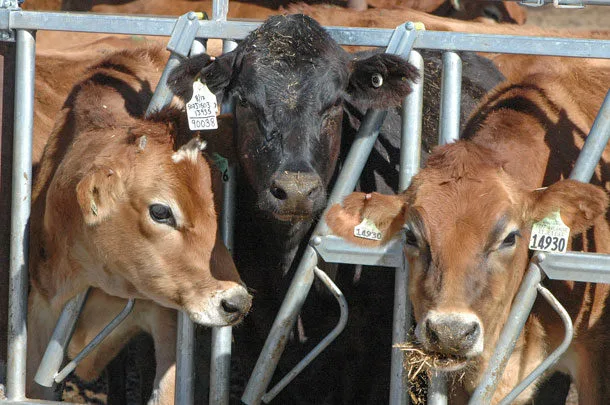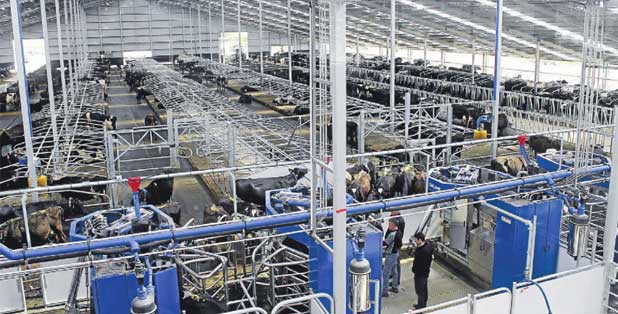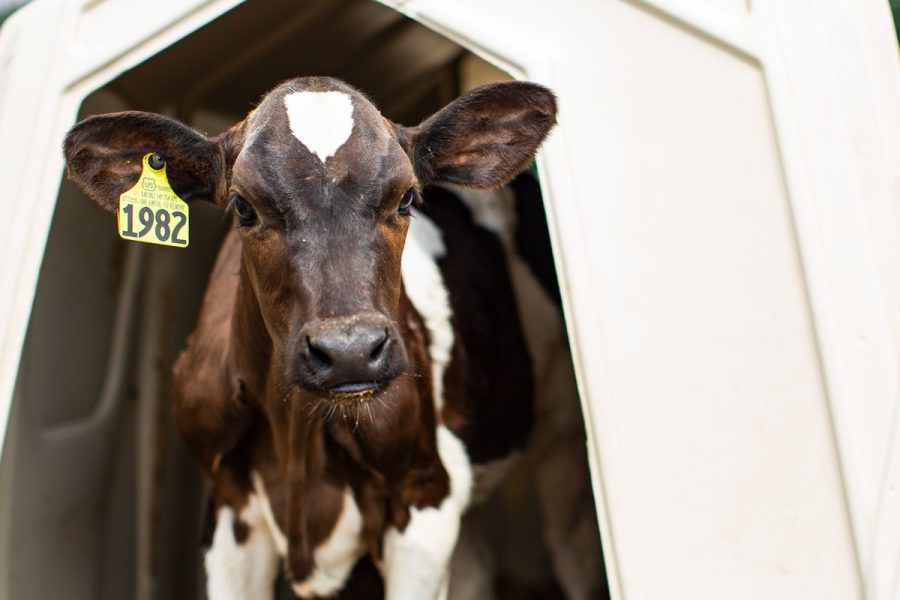Unlock the secrets to successful dairy cattle breeding. Are your decisions thoughtful enough to ensure optimal results? Discover why careful planning is essential.
Understanding the intricacies of dairy cattle breeding is not a task to be taken lightly. It’s a complex art that requires thoughtful decisions, which serve as the bedrock of a sustainable farm. These decisions, whether immediate or long-term, have a profound impact on your herd’s vitality and the economic success of your dairy farming.
Today’s decisions will affect your herd’s sustainability, health, and output for future generations. Breeding dairy cattle means choosing animals that enhance the genetic pool, guaranteeing better and more plentiful progeny. The variety of elements involved in these choices, from illness resistance to genetic diversity, cannot be overestimated.
This article is designed to empower you to make informed breeding choices. It emphasizes the importance of balancing short-term needs with long-term goals and the role of technology in modern breeding methods.
The Critical Role of Thoughtful Decisions in Dairy Cattle Breeding
Think about how closely environment, managerial techniques, and genetics interact. Your herd’s future is shaped via deliberate breeding aims. It’s not just about selecting the best-yielding bull; it’s also about matching selections with long-term goals like improving features like milk production, fertility, and health while appreciating genetic links impacting temperament and other characteristics.
Genetic enhancement in dairy breeding is a blend of science and art. It requires a deep understanding of your business’s beneficial traits. This involves a continuous commitment to change, particularly in understanding the genetic links between variables like milk production or health and temperament. The choice of sire must be intelligent and comprehensive, considering all these factors.
Including temperamental qualities in breeding plans highlights the difficulty of these choices. Environmental factors across different production systems affect trait expression, so precise data collection is essential. Informed judgments, well-defined breeding goals, and coordinated efforts toward particular goals depend on milk yield data, health records, and pedigrees.
Decisions on thoughtful breeding are vital. They call for strategy, knowledge, and awareness. By concentrating on controllable variables and employing thorough herd data, dairy farmers may guide their operations toward sustainable, lucrative results, ensuring future success.
Understanding Genetic Selection for Optimal Dairy Cattle Breeding
Choosing bulls for certain features shows the mix of science and art in dairy cow breeding. Apart from increasing output, the objectives include guaranteeing sustainability, health, and behavior and focusing on excellent productivity, health, and good behavior. Positive assortative mating, which is breeding individuals with similar traits, helps raise milk output and herd quality.
A well-organized breeding program must include explicit selection criteria and control of genetic variety to avoid inbreeding. Crucially, genomic testing finds animals with excellent genetic potential for milk output, illness resistance, and temperament. Friedrich et al.’s 2016 work underlines the relevance of genetic variations influencing milk production and behavior.
Genomic discoveries in Canada have improved milking temperament and shown the genetic linkages between temperament and other essential characteristics. Breeders must provide sires with proven genetic value as the priority, confirmed by thorough assessments so that genetic advancement fits production targets and sustainable health.
The Long-Term Benefits of Strategic Breeding Decisions
Strategic breeding decisions are not just about immediate gains; they shape your herd’s future resilience and output. By emphasizing the long-term benefits, we aim to foster a sense of foresight and future planning, ensuring sustainability and enhancing genetic development. Choosing sires with high health qualities helps save veterinary expenses and boost overall herd vitality, enabling the herd to withstand environmental challenges and diseases. This forward-thinking strategy prepares your dairy business for a prosperous future.
Genetic variety also lessens vulnerability to genetic illnesses. It improves a breeding program’s flexibility to market needs, climatic change, or newly developing diseases. While preserving conformation and fertility, setting breeding objectives such as increasing milk supply calls for careful balance but produces consistent genetic progress.
The evolution of genetic testing is revolutionizing dairy cow breeding. This method allows for precisely identifying superior animals, empowering farmers to make informed breeding choices and accelerate genetic gains. The assurance of resource optimization ensures that only the most significant genetic material is utilized, guaranteeing the best herd health and production outcome. This reassurance about the effectiveness of modern techniques aims to inspire confidence and trust in these methods.
Performance-based evaluation of breeding programs guarantees they change with the herd’s demands and industry changes. This means that your breeding program should be flexible and adaptable, responding to the needs of your herd and industry changes. Using sexed semen and implanted embryos gives more control over genetic results, enabling strategic herd growth.
Well-considered breeding choices produce a high-producing, well-rounded herd in health, fertility, and lifespan. Balancing production, sustainability, and animal welfare, this all-encompassing strategy prepares dairy farms for long-term success.
Tools and Techniques for Making Informed Breeding Decisions
Although running a successful dairy cow breeding program is a diverse task, you are not alone. Genetic testing is a method for identifying early animals with excellent illness resistance and milk output. This scientific breeding method improves genetic potential, promoting profitability and sustainability. Having such instruments helps you know that you have the means to make wise breeding selections. This section will delve into the various tools and techniques available as a breeder or dairy farmer and how they can help you make informed breeding decisions.
One cannot stress the importance of herd statistics in guiding wise breeding choices. Correct data on milk output, health, and pedigree let breeders make wise decisions. This data-centric strategy lowers negative traits by spotting and enhancing desired genetic features, producing a more robust and healthy herd.
Retaining genetic variety is also vital. Strictly concentrating on top achievers might cause inbreeding, compromising herd health. A balanced breeding program with well-defined requirements and variety guarantees a solid and efficient herd.
For guiding the gender ratio towards female calves, sexed semen technology is becoming more and more common, hence improving milk production capacities. Similarly, intentionally improving herd genetics by implanting embryos from elite donors utilizing top indexing sires enhances.
Fundamentals are regular examinations and changes in breeding strategies. Examining historical results, present performance, and new scientific discoveries helps to keep the breeding program in line.
Avoiding Common Pitfalls in Dairy Cattle Breeding
None of even the most incredible instruments can prevent all breeding hazards. One often-common error is depending too much on pedigree data without current performance records. Although pedigrees provide background, they need to be matched with current statistics.
Another problem is ignoring concerns about inbreeding. While this may draw attention to positive qualities, it can also cause genetic problems and lower fertility. Tracking inbreeding and promoting genetic variety is crucial.
Ignoring health in favor of more than simply production characteristics like milk output costs money. A balanced strategy values udder health and disease resistance and guarantees long-term herd sustainability.
Ignoring animal temperament is as troublesome. Choosing excellent temperaments helps handler safety and herd well-being as stress lowers output.
Adaptation and ongoing education are very vital. As welfare standards and genetics improve, the dairy sector changes. Maintaining the success of breeding programs depends on being informed by studies and professional assistance.
Avoiding these traps calls for coordinated approaches overall. Maintaining genetic variety, prioritizing health features, and pledging continuous learning help dairy herds be long-term successful and healthy using historical and modern data.
The Economics of Thoughtful Breeding: Cost vs. Benefit
| Cost | Benefit |
|---|---|
| Initial Investment in High-Quality Genetics | Higher Lifetime Milk Production |
| Use of Genomic Testing | Improved Disease Resistance and Longevity |
| Training and Education for Breeding Techniques | Enhanced Breeding Efficiency and Reduced Errors |
| Advanced Reproductive Technologies | Accelerated Genetic Gains and Shortened Generation Intervals |
| Regular Health Monitoring and Veterinary Care | Decreased Mortality and Morbidity Rates |
| Optimized Nutritional Programs | Improved Milk Yield and Reproductive Performance |
Although the first expenses of starting a strategic breeding program might appear overwhelming, the long-term financial gains often exceed these outlay. Modern methods like genetic testing, which, while expensive initially, may significantly minimize the time needed to choose the finest animals for breeding, are included in a well-considered breeding strategy. This guarantees that only the best indexing sires help produce future generations and simplifies choosing.
Furthermore, employing sexed semen and implanted embryos helps regulate the herd’s genetic direction more precisely, thus maybe increasing milk output, enhancing general productivity, and improving health. Such improvements immediately result in lower expenses on veterinarian treatments and other health-related costs and more milk production income.
One must also consider the financial consequences of juggling lifespan and health with production characteristics. Although sound milk output is crucial, neglecting elements like temperament and general health might result in more expenses for handling complex animals. Including a comprehensive breeding strategy guarantees a more resilient and productive herd, providing superior returns over time.
Furthermore, ongoing assessment and program modification of breeding initiatives enables the best use of resources. By carefully documenting economically important characteristics, dairy producers may maximize efficiency and production and make wise judgments. This data-driven strategy also helps identify areas for development, guaranteeing that the breeding program develops in line with the herd’s and the market’s requirements.
Ultimately, knowledge and use of these long-term advantages determine the financial success of a deliberate breeding plan. Although the initial outlay might be significant, the benefits—shown in a better, more efficient herd—may guarantee and even improve the financial sustainability of a dairy running for years to come.
The Future of Dairy Cattle Breeding: Trends and Innovations
| Year | Expected Improvement in Milk Yield (liters/year) | Expected Increase in Longevity (months) | Projected Genetic Gains in Health Traits |
|---|---|---|---|
| 2025 | 200 | 3 | 10% |
| 2030 | 350 | 5 | 15% |
| 2035 | 500 | 7 | 20% |
As the dairy sector develops, new trends and ideas change cow breeding. Genomic technology has transformed genetic selection, making it possible to identify desired features such as milk production and disease resistance. This speeds up genetic advancement and increases the precision of breeding choices.
Furthermore, data analytics and machine learning are increasing, which enable breeders to examine vast performance and genetic data. These instruments allow individualized breeding techniques to fit particular herd objectives and environmental variables and, more precisely, estimate breeding results. This data-driven strategy guarantees that every choice is measured toward long-term sustainability and output.
Additionally, holistic breeding goals, including environmental sustainability and animal welfare, are increasingly stressed. These days, breeders prioritize milking temperament, lifespan, and feed efficiency. Studies like Friedrich et al. (2016) show the genetic connections between specific characteristics and general agricultural profitability.
Reproductive technologies like in vitro fertilization (IVF) and embryo transfer (ET) powerfully shape dairy cow breeding. These techniques improve herd quality via the fast multiplication of superior genetics. Combined with genetic selection, these technologies provide unheard-of possibilities to fulfill farmers’ particular needs, from increasing milk output to enhancing disease resistance.
The sector is nevertheless driven forward by combining biotechnology with sophisticated breeding techniques. Precision genetic changes made possible by gene editing technologies such as CRISpen introduce desired phenotypes. From improving efficiency to reducing the environmental effects of cattle production, these developments solve essential problems in dairy farming.
Finally, the complex interaction of genetics, data analytics, reproductive technologies, and biotech developments defines the direction of dairy cow breeding. Using these instruments helps dairy farmers make wise, strategic breeding choices that guarantee their herds flourish in a changing agricultural environment.
The Bottom Line
In essence, wise decision-making determines the success of your dairy cattle production program. Understanding genetic selection, matching production features with health, and using modern methods can help you improve herd performance. A sustained business depends on avoiding typical mistakes and prioritizing economic issues.
Investing in careful breeding plans can help you turn your attention from transient profits to long-term rewards. Give characteristics that increase income priority and reduce costs. One benefits greatly from a comprehensive strategy involving efficient feed cost control and consideration of herd wellbeing.
Thinking about the long-term consequences of your breeding decisions results in a solid and profitable herd. Maintaining knowledge and initiative in breeding choices is crucial as the sector changes with fresh ideas and trends. Commit to deliberate, strategic breeding today and see how your herd performs and how your bottom line changes.
Key Takeaways:
- Thoughtful breeding decisions are vital for the long-term health and productivity of dairy herds.
- The selection of genetic traits should be backed by comprehensive data and rigorous analysis.
- Strategic breeding can enhance milk production, disease resistance, and herd quality over generations.
- Investing in high-quality genetics upfront leads to significant economic benefits over time.
- Modern tools and technologies, such as genomic testing, play a crucial role in informed breeding decisions.
Summary
Dairy cattle breeding is a complex process that requires strategic decision-making and careful selection of animals to ensure healthier and more productive offspring. Genetic improvement in dairy breeding is both science and art, requiring a deep understanding of beneficial traits. Sire selection must be comprehensive and strategic, involving accurate data collection from milk yield, health records, and pedigrees. Positive assortative mating, which focuses on high productivity, health, and favorable behaviors, significantly improves milk production and herd quality. A well-structured breeding program requires clear selection criteria and genetic diversity management to prevent inbreeding. Genomic testing is critical for identifying animals with top genetic potential for milk yield, disease resistance, and temperament. Breeders must prioritize sires with proven genetic merit, validated through rigorous evaluations, to align genetic progress with sustainable health and productivity goals. The economics of thoughtful breeding include cost vs. benefit, with initial investment in high-quality genetics leading to higher lifetime milk production, improved disease resistance, enhanced breeding efficiency, reduced errors, advanced reproductive technologies, regular health monitoring, veterinary care, and optimized nutritional programs.
Learn More
In the realm of dairy cattle breeding, knowledge is power. To make informed decisions that will lead to healthier, more productive herds, it’s essential to stay updated on the latest strategies and techniques. Here are some valuable resources to deepen your understanding:














